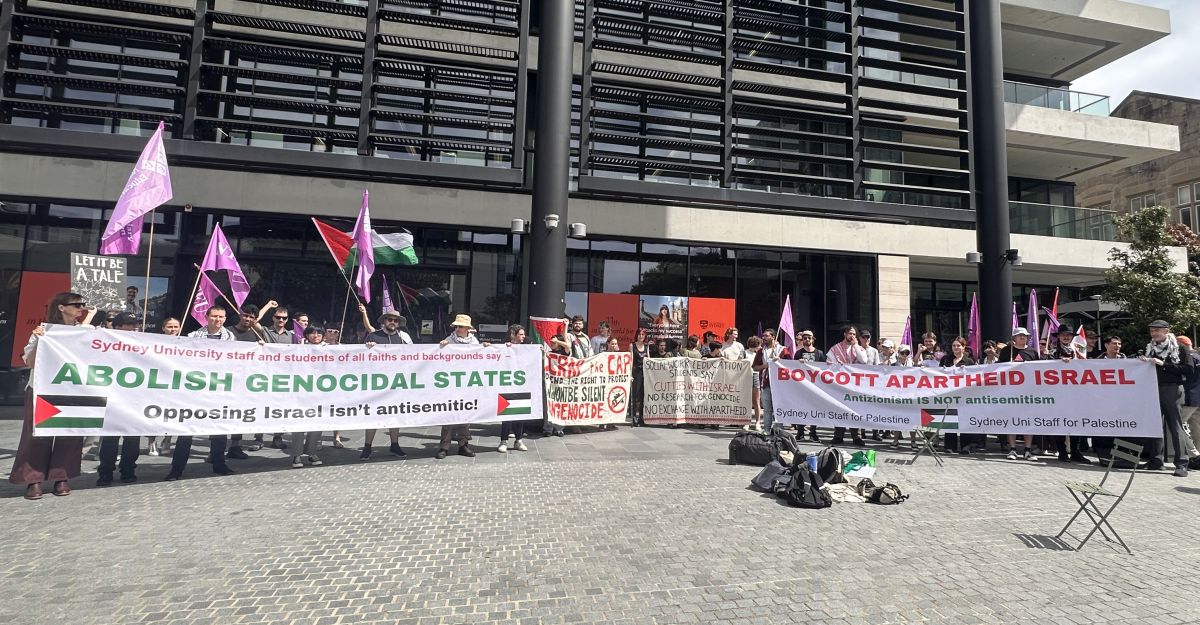The University of Chicago is one of the latest schools to push back against trigger warnings and safe spaces in a letter to incoming students. Media attention around the letter indicates that the public debate around trigger warnings is not about to go away. Although the debate around safe spaces and trigger warnings is often US-centric in nature, trigger warnings have also become a visible feature of Australian activist culture. 2015 was a big year for such debates: former lecturer at Harvard University and Brandeis University, Rani Neutill, wrote that despite using trigger warnings for her class on sex in film, student responses played a role in her decision to leave the academy. In the same year, an essay by Laura Kipnis, professor of media studies at Northwestern University, described what she saw as the ‘vulnerability’ of activist and feminist students on campus. Student protests and petitions against Kipnis led to her being investigated for sexual discrimination and subjected to hours of questioning. While there is little need to rehash the opposing and supporting arguments in this debate (over which much ink has been spilled), these events and the discussion around them demands to be looked at in a new historicised light.
In the context of education, trigger warnings function as a ‘heads-up’ on academic or instructional material which might cause discomfort or trigger a panic attack for students with post-traumatic stress disorder (PTSD) or other kinds of trauma disorder. One resource list provides common warnings, ranging from ‘discussion of –isms’ – racism, sexism and the like – to ‘skulls, snakes, spiders or discussion of sex’. Trigger warnings are often described as tools that allow students to mediate the classroom and potentially confronting content. At several US universities, student-led petitions to establish trigger warnings in course syllabi have been successful, however recent research shows that few institutions have actually implemented formal polices.
The narrative that trigger warnings pose a threat to freedom of speech, driven by a rabid identity politics, a resurgence of ‘political correctness’, or simply infatalised, maladjusted students is not just banal and intellectually lazy, but positions students themselves as the antagonists who pose a threat to education. Valid critique of the practice has often failed to come without the smug, simplistic account of the over-sensitive student who wants to be coddled and insulated from the ‘real world’ of politics. (Although he raised many cogent points, the overall condescension towards younger activists in Jack Halberstam’s piece springs to mind.) This strain of anti-student backlash has stymied efforts to have a meaningful dialogue on trigger warnings as part of a broader, holistic feminist practice of understanding and conceptualising trauma.
A counter-narrative to the trigger warning wars is that, in the context of twenty-first century struggles, it is trauma itself which is their foundational notion. Rather than identity politics or ‘political correctness’, it is the idea of the traumatised subject, and a growing therapeutic culture of wellness, self-help and psychology as ideas of our time, shaping the student-led demand for trigger warnings.
Wendy Brown might as well have been speaking of trigger warnings in her 1995 work, States of Injury, where she investigated how a logics of pain features in subject formation in late modernity. In the 1960s, the sociologist Philip Rieff used the phrase ‘the triumph of the therapeutic’ to describe the way psychiatric ideas have become part of everyday discourse. The trigger warning’s centering of personal psychic history, recovery and therapeutic selfhood could be seen to reflect the popularisation of psychological knowledge and a cultural preoccupation with inner emotional life.
As Brown was asking almost two decades’ ago: what kind of feminist practice is made of the focus on sites of injury? Are we, rather paradoxically, enclosed at the site of harm, as wounded subjects? Brown’s view might suggest that trigger warnings are implicated in the production and regulation of the subjects to whom they are assigned, functioning not only as a pedagogical tool, but also becoming constitutive of new political subjects.
In many ways, trigger warnings are a powerful student-led critique of traditional pedagogy – yet we cannot ignore the ways they now converge in the neoliberal, managerial university. One perspective might see the weaponisation of the demand on academics to provide trigger warnings as predominately targeting precariously employed, casual academic staff, through impinging on academic freedom, saddling on extra responsibilities to pay closer attention to the emotions and wellbeing of students even though teaching staff are not necessarily trained or qualified to make such assessments, and requiring staff to alter course materials and teaching methods (as Oberlin College’s guide recommended). From this perspective, student demands may actually empower the university as an institution, strengthening it as an apparatus for surveillance and disciplinary-bureaucratic policies, contra the very people who teach them.
Perhaps it shouldn’t be surprising that student attempts at reclaiming their educational experience from corporatised universities should reflect a consumerist attitude aligned with neoliberal economic policy. Rather than present this as a disparaging attack on students, trigger warnings might reflect back to us the deep crisis within higher education.
But what is it to be ‘triggered’ and what do we really mean when we talk about trauma? It was the feminist movement (along with the anti-Vietnam War movement) in the 1960s that gave a diagnostic name, and legitimacy, to the experience of trauma. Previously known as ‘shell shock’ or ‘combat fatigue’, PTSD has increasingly shaped how both psychiatry and everyday citizenry understands trauma. With origins in left political movements and feminist trauma theory, PTSD is now a broadly accepted psychological diagnosis and disorder.
Feminist trauma theorists and some therapists argued that women are traumatised by their experiences of gendered violence, through assault, rape and domestic violence, just as men are traumatised through military combat. They used and adapted the term ‘trauma’ and successfully framed its symptoms as ‘coping skills’. The feminist movement’s consciousness-raising around women’s trauma provided an alternative to Freud’s analysis of women’s hysteria, which had previously dominated in psychiatric literature. Feminist trauma theory allowed for a reframing of women’s lived realities and situated gendered violence within an explicitly socio-political context, making a break with the overt paternalism and masculinism of prior medical and psychiatric discourse.
Since PTSD’s inclusion in the DSM, feminist trauma theorists have critiqued approaches to trauma that can actually further entrench normative assumptions, for example through pathologisation, the language of diagnosis and approaches to therapy and wellbeing. Ann Cvetkovich’s work on queer approaches to trauma studies emphasises the importance of ‘ways of thinking about trauma that do not pathologise it, that seize control over it from the medical experts, and that forge creative responses to it that far outstrip even the most utopian therapeutic and political solutions’. A clinical model of trauma privileges the ‘scientific’ vernacular of medicine and neuroscience, disconnecting trauma from its embodied, socio-political context. This can result in languages that do not allow us to see how state institutions are also hugely instrumental in the creation and regulation of trauma.
That feminist trauma theory emerged directly as a critique of psychiatry and psychological ‘knowledge’ seems to be a conveniently buried history on both sides of the trigger warning wars. Assimilating the medical industrial complex’s categories might signal a break with a trauma’s framework first articulated by the feminist and the antiwar movements in the 1960s. Trigger warnings reflect a preoccupation with the therapeutic in everyday life and a psychiatric industry that paints a very different history of itself. Although trigger warnings do not entirely reify the medicalisation of trauma, they do tend to submerge trauma’s roots in feminist trauma theory. A logic of individual pain tends to prevail, ironically running the risk of obscuring the causes of structural violence and inequality.
To situate and contextualise trigger warnings within the history of trauma itself is not a repudiation of trigger warnings, but rather is part of a committed engagement with their use and practice. Whether they can help reclaim trauma from a progressively medicalised model, or further reinscribe this understanding, is worth contemplation. Regardless, the practice of using trigger warnings provides an opportune moment to recall the role feminist movements played in the legitimation and politicisation of embodied traumatic experience, thereby engineering a shift from hysteria to trauma.
Image: ‘Sigmund Feud, 1926’ / Wikipedia.






